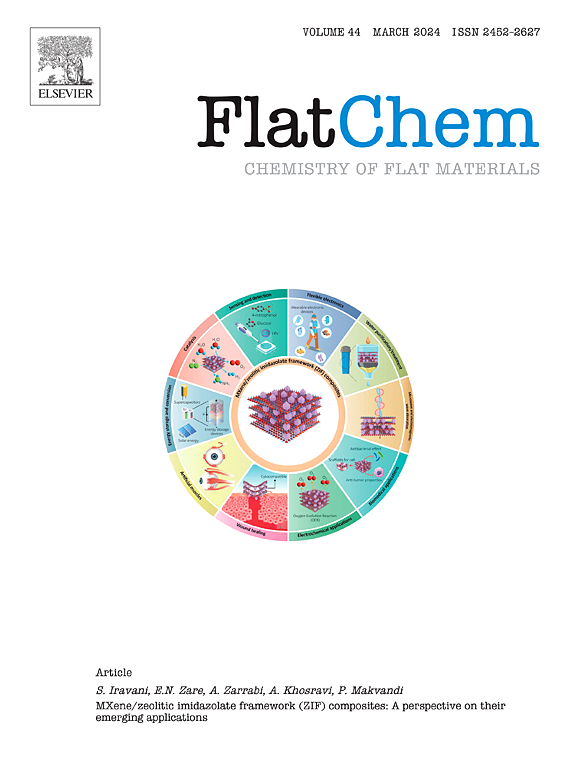在石墨表面的硫酸电解质溶液中使用两个或三个电极配置的分子咖啡因电极用于制氢
IF 6.2
3区 材料科学
Q2 CHEMISTRY, PHYSICAL
引用次数: 0
摘要
研究了在硫酸电解液中对咖啡因制氢石墨电极的表面改性。采用红外光谱(FTIR)、热重分析仪(TGA)和扫描电镜(SEM)对石墨和咖啡因改性石墨进行了表征。此外,利用直流电源设置不同电压(2、4、6、8和10 V),并使用自动实验室工作站进行循环伏安法(CV)、线性扫描伏安法(LSV)和计时安培分析,对产氢进行了评估。在双电极计时电流和直流电源设置下,分别获得了−0.65 V (vs RHE)和6.36 mA/cm2的析氢电流密度,分别对应于−0.65 V和9.803 V (vs RHE)。本文章由计算机程序翻译,如有差异,请以英文原文为准。

Molecular caffeine electrode for hydrogen production using two or three electrode configurations in sulphuric acid electrolyte solution on a graphite's surface
The surface modification of graphite electrodes for hydrogen production using caffeine was investigated in sulphuric acid electrolyte. Characterization of both the graphite and the modified graphite with caffeine was conducted using FTIR, TGA, and SEM techniques. Additionally, an evaluation of hydrogen production was carried out using a direct current power supply set at various voltages (2, 4, 6, 8, and 10 V) and with an Autolab Workstation for cyclic voltammetry (CV), linear scan voltammetry (LSV) and chronoamperometric analyses. A hydrogen evolution current of density of −1000 mA/cm2 corresponding to −0.65 V (vs RHE) and 6.36 mA/cm2 corresponding to 9.803 V (vs RHE) were achieved under two-electrode chronoamperometric evaluations and direct current power supply set-up, respectively.
求助全文
通过发布文献求助,成功后即可免费获取论文全文。
去求助
来源期刊

FlatChem
Multiple-
CiteScore
8.40
自引率
6.50%
发文量
104
审稿时长
26 days
期刊介绍:
FlatChem - Chemistry of Flat Materials, a new voice in the community, publishes original and significant, cutting-edge research related to the chemistry of graphene and related 2D & layered materials. The overall aim of the journal is to combine the chemistry and applications of these materials, where the submission of communications, full papers, and concepts should contain chemistry in a materials context, which can be both experimental and/or theoretical. In addition to original research articles, FlatChem also offers reviews, minireviews, highlights and perspectives on the future of this research area with the scientific leaders in fields related to Flat Materials. Topics of interest include, but are not limited to, the following: -Design, synthesis, applications and investigation of graphene, graphene related materials and other 2D & layered materials (for example Silicene, Germanene, Phosphorene, MXenes, Boron nitride, Transition metal dichalcogenides) -Characterization of these materials using all forms of spectroscopy and microscopy techniques -Chemical modification or functionalization and dispersion of these materials, as well as interactions with other materials -Exploring the surface chemistry of these materials for applications in: Sensors or detectors in electrochemical/Lab on a Chip devices, Composite materials, Membranes, Environment technology, Catalysis for energy storage and conversion (for example fuel cells, supercapacitors, batteries, hydrogen storage), Biomedical technology (drug delivery, biosensing, bioimaging)
 求助内容:
求助内容: 应助结果提醒方式:
应助结果提醒方式:


